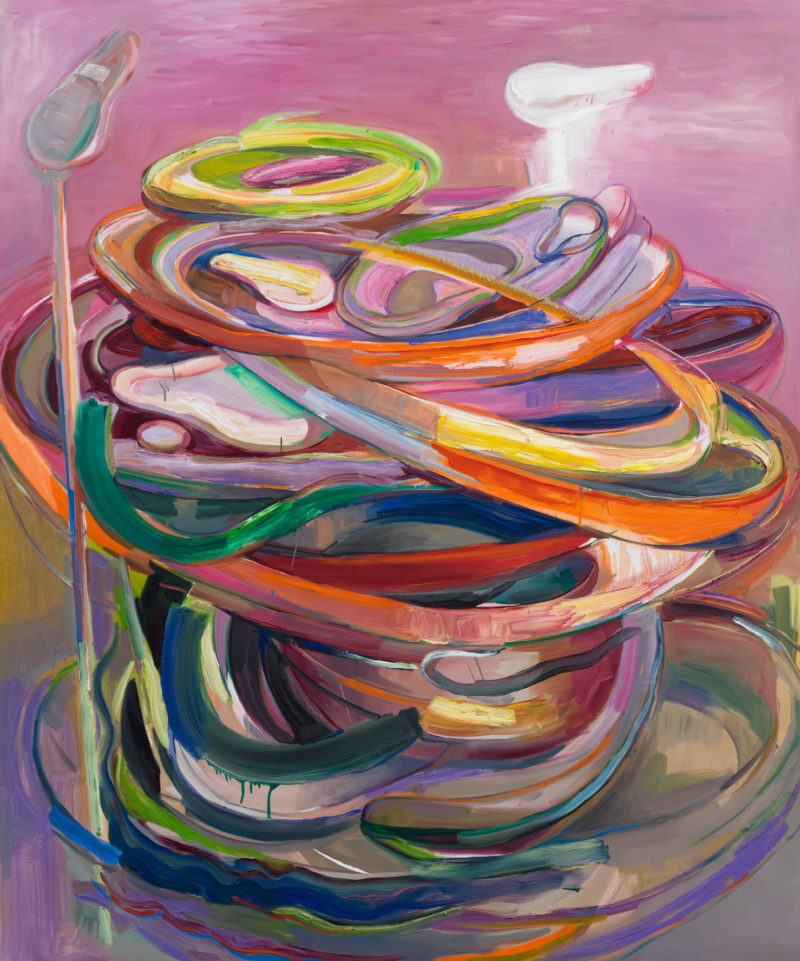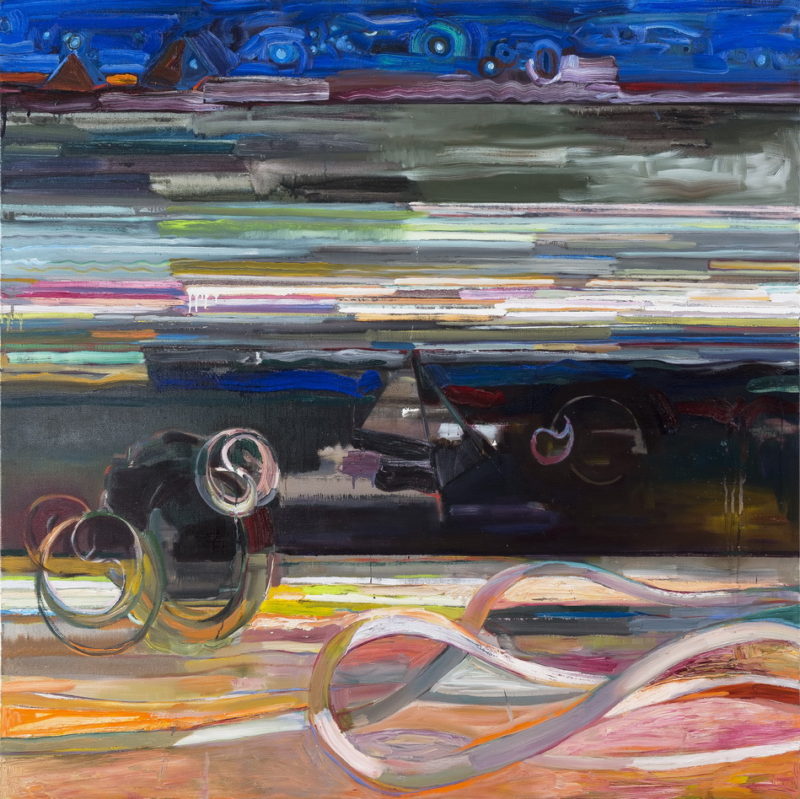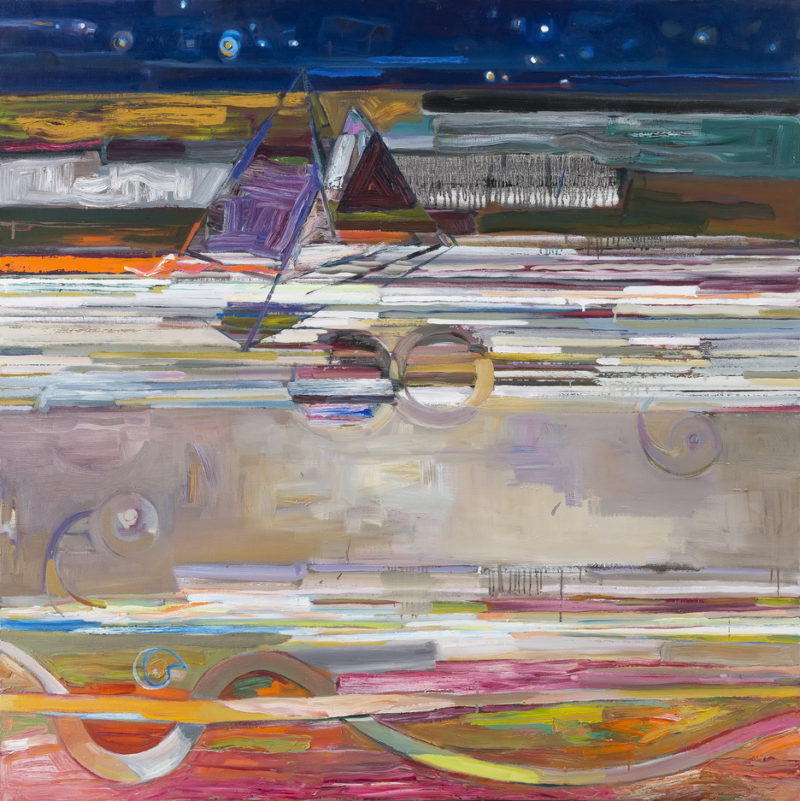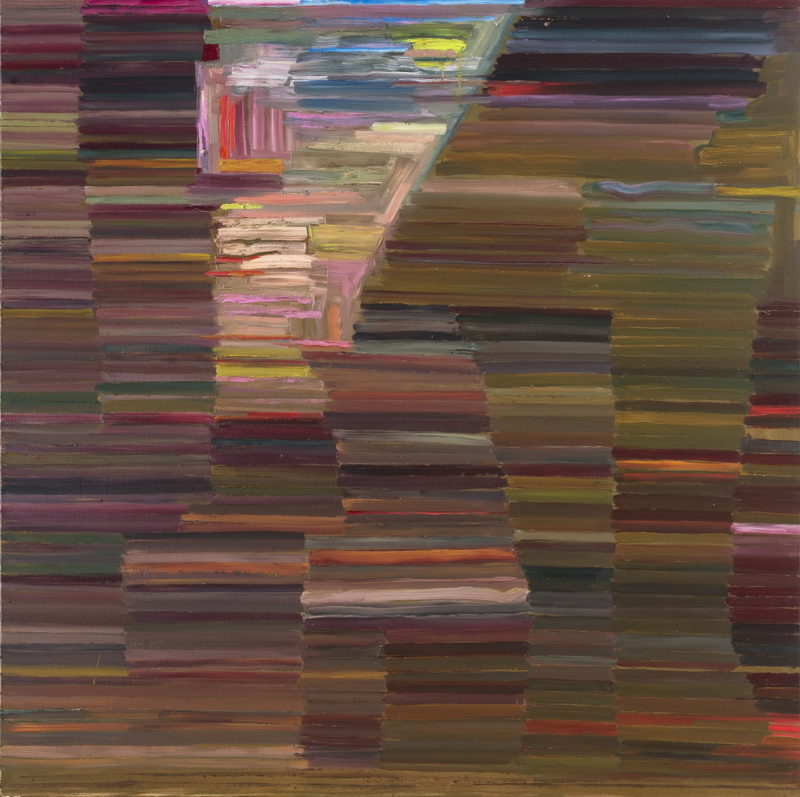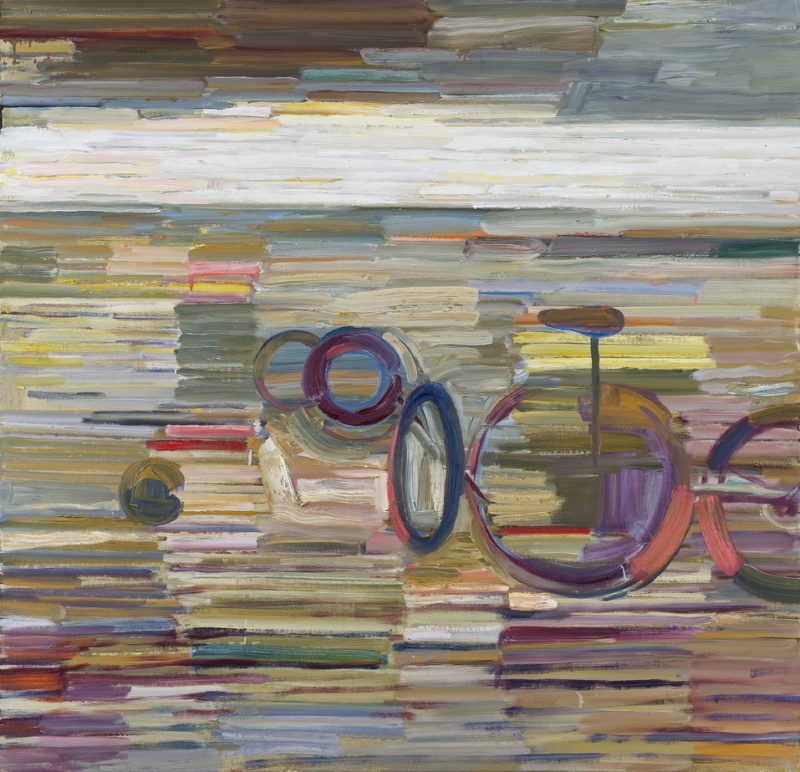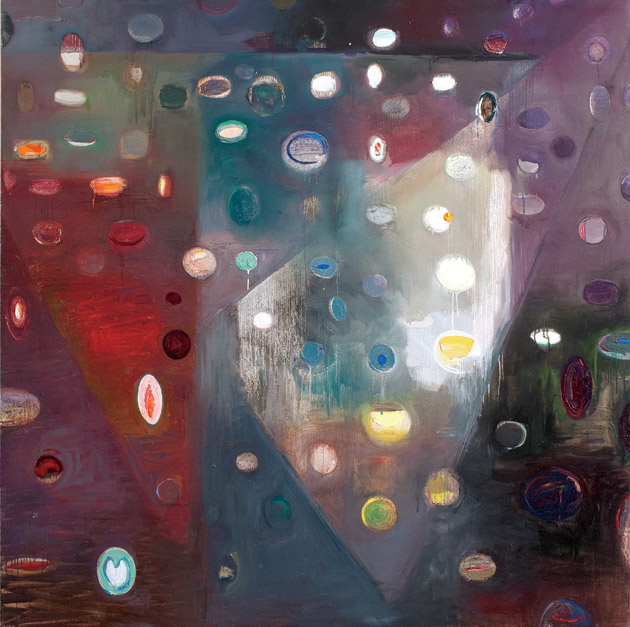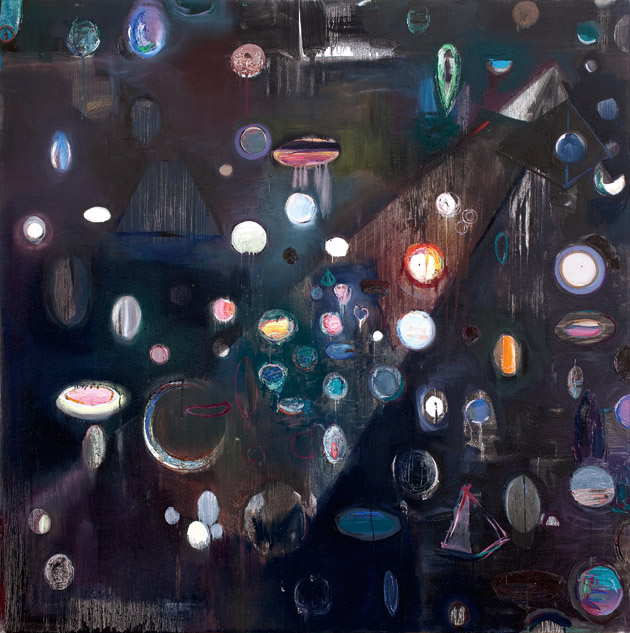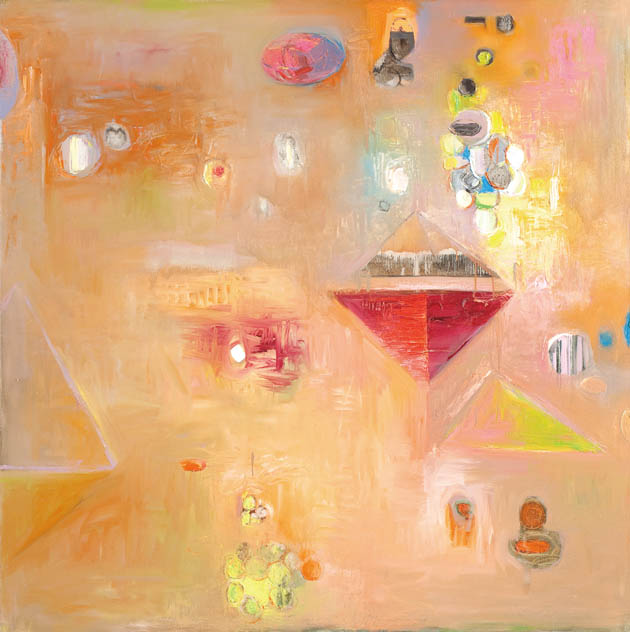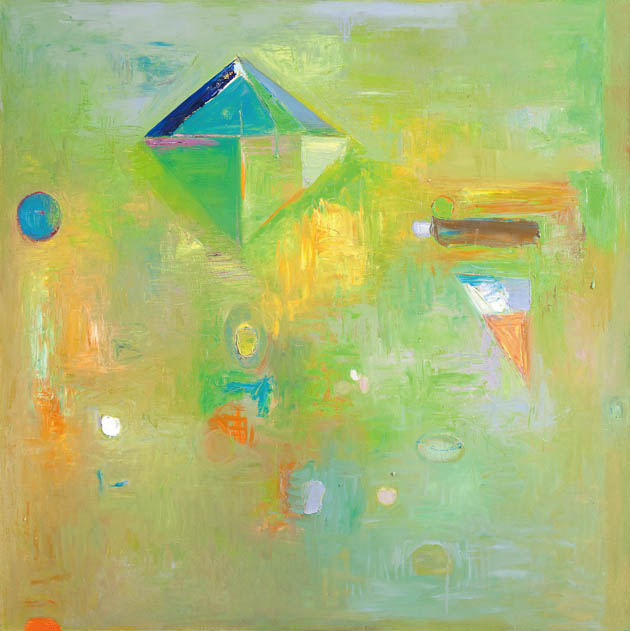“This is the first of a series of paintings which were completed on this theme around 2010 and underscores my deep feelings and respect for China’s history of the Silk Road and its untold stories and mysteries. Chinese explorers also travelled under “colorful orbs that….represented the stars that guided navigation and helped light the way”… (Barry Gaither), before high sky-scrapers invaded its local landscape environment. Hence my depiction of deep blue skies, the stars and planetary bodies. I continue to work on a series deeply rooted in this fascinating concept based on the Silk Road and the dying aspects of this culture and those aspects of it that will soon be no more. Speed with which the changing commerce, culture and an art world that is emerging in the context of the 21st Century. The large socio-cultural and economically intertwined developments taking place worldwide. The social media highway. I have spent time in both Xi’an and Turkey painting, which characterize both end of the “Silk Road”. The ancient trade and cultural link between East and West, before the era of bicycles, airplanes, electronic communications or current cutting edge technologies. The Silk Road now leads to the building of new Pyramids and highways. My own Silk Road has taken me into the Pyramids of China artist biography.”
— Bryan McFarlane (2010)
“Two grand themes are especially present in McFarlane’s paintings. They are the flow of ideas between the old worlds of the East (Asia) and the West (Europe) as essentialized in the Silk Road as an historical feature and imaginative concept, and the dramatic socio-political, cultural and economic eruptions that arose from transatlantic slavery and the collapse of the colonial order throughout the Americas and Africa, as well as much of Asia. Several vital subthemes spin out from the East/West flow and the aftermath of slavery and colonialism. McFarlane comments upon and engages us in reflection on these conditions as he posits a highly individual iconography probing such grave topics. Along the way, he freely draws on visual strategies drawn from the full range of modernist abstraction.”
“Silk Road with Pyramids Yin also utilizes the pyramid as a symbol of history, but this time the history is McFarlane’s fascination with Asia, and in particular, with the famed Silk Road. Having spent time at both ends of the route–Turkey and China–he appreciates the genius and cunning that established and maintained this ancient trade and cultural link between the East and the West before the era of airplanes and electronic communications. In Silk Road with Pyramids Yin, he expresses respect for its mystery and legacy, even as he partially hides the pyramids that indicate the way, planting them beneath numerous colorful orbs that may represent the stars that guided navigation and helped light the way.”
– Barry Gaither Director of the Museum of the National Center of African Artists, Boston
